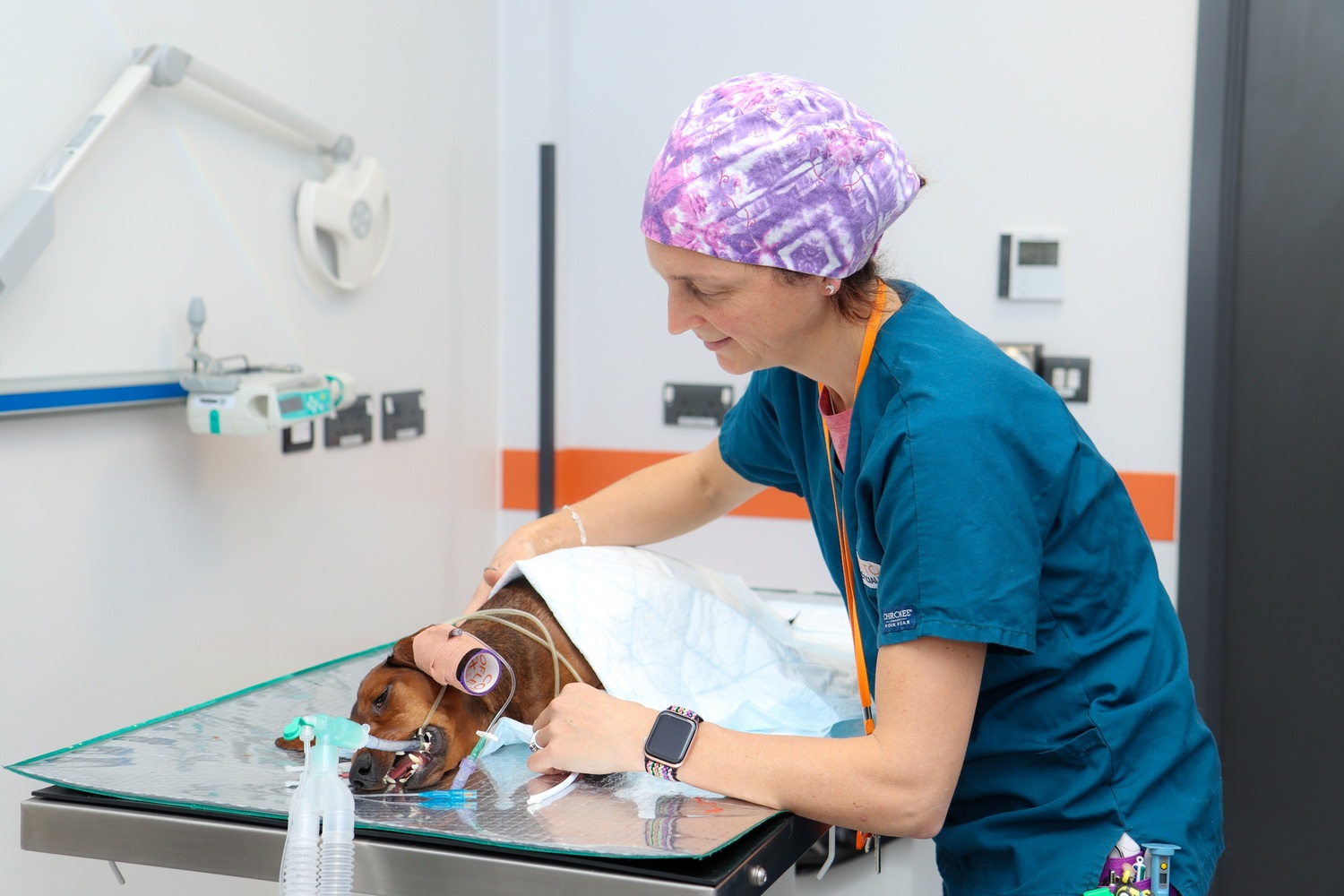THE CUSTOM ANAESTHESIA PLAN...
treating each patient as an individual

by Elora-Dane Hurcomb DipVN, Cert E&CC, Senior Anaesthesia Nurse at Bristol Vet Specialists and BVNA Congress 2025 speaker
Fixed drug protocols have been commonplace in vet practices for many years and whilst they do have their advantages, (colleagues are familiar with the doses, drugs and side effects, fewer mistakes may happen with preparing these drugs, the protocol has been decided by a vet, tried and tested with few concerns), this may not be the best option for our patients.
In referral anaesthesia we have moved away from the set ‘Bitch Spay’ protocol, instead we treat each patient completely individually, customise the drug selection to them and the procedure with remarkable success. This does not have to be something only done at referral level and here is why.
It encourages us to find out about our patient – The first step of this is reading the patient’s history, checking for any relevant information such as medications, records of heart murmur, temperament indications, previous sedations/anaesthesia – what was given and how the patient coped but under anaesthesia and afterwards. The second step is a clinical exam, TPR the patient and include assessment of peripheral pulses, synchronicity to heartbeat and thoracic auscultation on both sides of the chest. All this information not only allows us to spot anything relevant, but we can do a much better job for them if we are prepared and know them well. This also is very reassuring for our clients, who always want to feel that their pet is special and important to us.
This makes our clinical knowledge and understanding excellent – Thinking about what considerations for your patient are, now you know their specifics, and the procedure you can identify appropriate medications. For example, knowing it will be very painful surgery you can identify the need for using full mu agonist opioid and suggesting local regional techniques, knowing a patient is a regurgitation risk may influence any pre-operative medications (like prokinetics) and adapt where and how we premedicate and induce them ensuring we reduce risk as much as possible for the patient.
Our pharmacokinetic knowledge grows – When considering which pharmaceuticals may be appropriate we expand our knowledge of these drugs by understanding their indications, contraindications and side effects for example, acepromazine causes peripheral vasodilation and is not reversible, this therefore may be a less appropriate choice of premedication in a patient where we are concerned about hypotension over something like dexmedetomidine (alpha-2 agonist) which produces initial vasoconstriction and is reversible
The patient only has what they need (not more or less) – We avoid under or over dosing patients if a set regime is not in place, we might have a very calm elderly Labrador who might not need as high a dose of sedation as a young healthy spaniel, in our practice the difference in sedation for these patients could be up to 8mcg/kg of Dexmedetomidine, by adjusting the dose we are minimising the risk of seeing unwanted or adverse side effects such as very deep sedations, prolonged recovery, cardiovascular depression, inadequate sedation, challenging anaesthesia depth.
We can identify those patients who may need something different – We might identify a patient who needs a chill protocol before attending the practice, we might identify a history of vomiting or regurgitation requiring prokinetics before surgery, we might find an undiagnosed heart murmur identifying a contraindication for alpha-2 agonist, this patient may be the very anxious kind who needs some sedation or recovery or may be more agitated by having a limb that has been blocked with locoregional anaesthesia.
Job satisfaction – There is benefit for us to! It gives the opportunity to engage our brains, having to think about each individual drug and factor, whether it is an appropriate choice for the patient, what the pros and cons of each decision may be.
Having a good clinical picture of the patient, an understanding of their individual/procedure needs along with a knowledge of the drugs we are using allows us to really target specific concerns, alleviate unnecessary risks and do a wonderful job for our patients.
